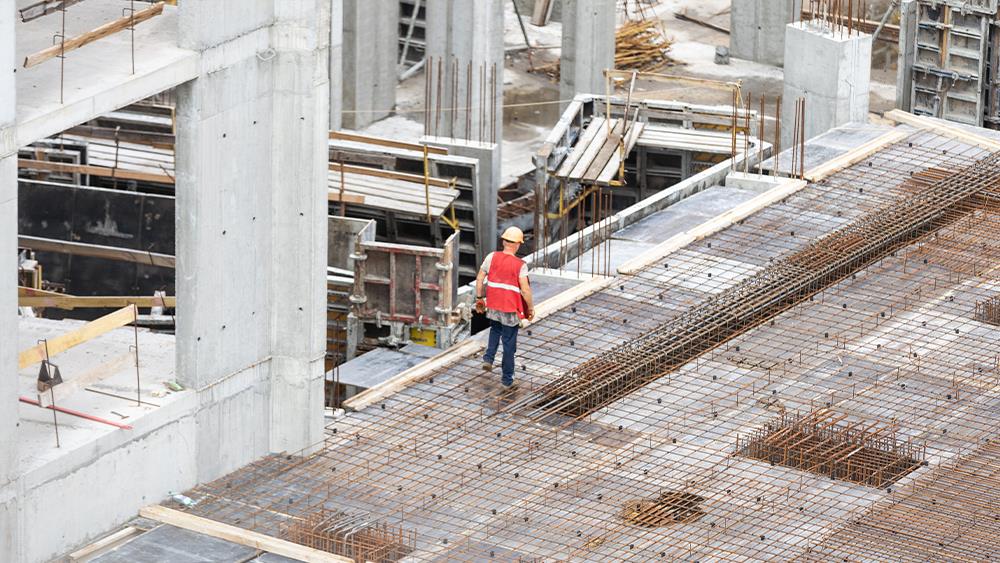

According to the S&P Global Construction PMI for June, total activity has been falling for the sixth month running, although reduced commercial and civil engineering work was offset by a rise in housing activity.
Construction companies indicated a marginal reduction in total business activity during June, despite a return to growth in residential building work. However, new orders decreased at an accelerated pace. This contributed to the weakest degree of business optimism across the construction sector for two-and-a-half years.
At 48.8 in June, the headline S&P Global UK Construction Purchasing Managers’ Index (PMI) – a seasonally adjusted index tracking changes in total industry activity – was up from 47.9 in May and signalled the slowest decline in construction output since the current period of contraction began in January.
Any reading below 50.0 indicates an overall reduction in construction activity. The marginal decline in construction output during June reflected accelerated rates of contraction in the commercial and civil engineering segments.
Commercial work decreased at the fastest pace since May 2020 (index at 45.1), which survey respondents attributed to subdued UK economic conditions and cutbacks to investment spending among clients. Civil engineering (44.2) fell for the sixth month running and was the weakest-performing area of construction activity. House building was the only category of construction work to expand in June (50.7). Higher levels of residential activity were recorded for the first time since September 2024, although the rate of growth was only marginal.
Some firms commented on an upturn in new projects and sales pipelines. New order books across the construction sector as a whole deteriorated for the sixth successive month in June, with the rate of decline accelerating since May. Survey respondents commented on fewer tender opportunities and intense competition for new work, reflecting weak overall demand conditions and heightened risk aversion among clients.
Mirroring the trend for new work, latest data indicated a sustained downturn in staffing numbers. Construction companies have recorded cutbacks to employment throughout the year to date. This was again linked to lower demand and efforts to reduce overheads.
Demand for construction items softened again in June. Reduced purchasing activity has been recorded consistently since December 2024, although the latest fall was the least marked for five months. Supplier performance meanwhile improved to the greatest extent since June 2024, despite some reports of international shipping delays. June data signalled a sharp increase in purchasing costs across the construction sector. Firms cited higher prices paid for a range of products and materials, including concrete, insulation and timber. However, the overall rate of cost inflation eased for the third month in a row and was the lowest since January.
Finally, business expectations for the year ahead moderated in June. Around 34% of the survey panel anticipate a rise in output, while 18% expect a decline. This pointed to the lowest degree of optimism since December 2022. Anecdotal evidence suggested that subdued sales enquiries and worries about the UK economic outlook had weighed on business confidence.
Tim Moore, Economics Director at S&P Global Market Intelligence, said: "June data highlighted a sustained downturn in UK construction output, albeit at the slowest pace in six months.
"Shrinking workloads in the commercial and civil engineering segments weighed on total industry activity. Commercial activity fell at the sharpest rate in just over five years.
"On a brighter note, house building was the bestperforming area of the construction sector. Higher levels of residential work were recorded for the first time since September 2024 amid some reports of more stable demand conditions.
"The forward-looking survey indicators were weaker than in May. Total new orders fell at a faster pace as many construction companies signalled reduced overall workloads due to unfavourable domestic economic conditions and fragile confidence among clients.
"At the same time, business activity expectations dipped to a two-and-a-half-year low in June. Survey respondents widely cited fewer tender opportunities, rising competition for new work and a projected headwind from subdued business investment during the year ahead."